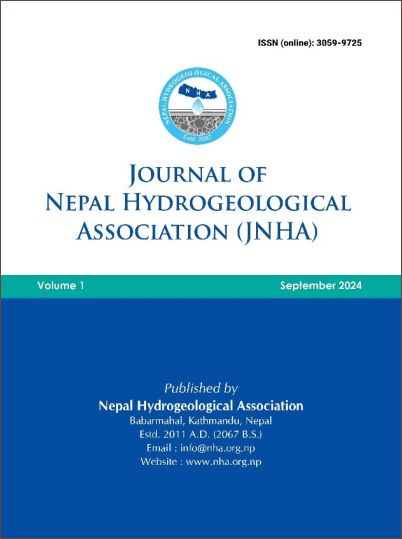Mountain hydrogeology and influence of active fault: A study of the Bhimgethi-Devisthan section in Western Nepal
DOI:
https://doi.org/10.3126/jnha.v1i1.78218Keywords:
Mountain Hydrogeology, Natural Springs, Active Fault, Fracture AquiferAbstract
Mountain springs are the sole dependable water sources in the hilly region for peoples' daily needs. The current study examines the hydro-geological scenario in the area of the active fault zone. Through fieldwork and questionnaire survey, the study analyzes the characteristics of natural mountain springs in relation to geology, slope, aspect, type of deposit, spring type, discharge rate, and electrical conductivity. All the springs surveyed are perennial. About 71 % of springs are fracture and fault-dominated, indicating that the fractured and deformed rock plays a significant role in controlling the groundwater occurrence. Current study has shown that discharge of springs near the fault zone has decreased considerably over the last decade, with some springs shifting to lower elevation due to landslides triggered by shearing. Fault zones can act as either a conduit or a barrier to groundwater flow. The numerical analysis of fault zone architecture and permeability structure reveals a conduit-barrier fluid flow system. The damage zone, constituting of fractures, facilitates for rainwater recharge, while the core functions as a barrier, particularly in the southern half of the study area. Additionally, the findings related to electrical conductivity further support the presence of a barrier-type fluid flow system in the southern part along the fault core. However, the springs associated with silicified breccia indicate a conduit flow system in the northern section. Overall, the fault zone significantly influences the origin, discharge rate, and flow direction of spring sources across the study area.




